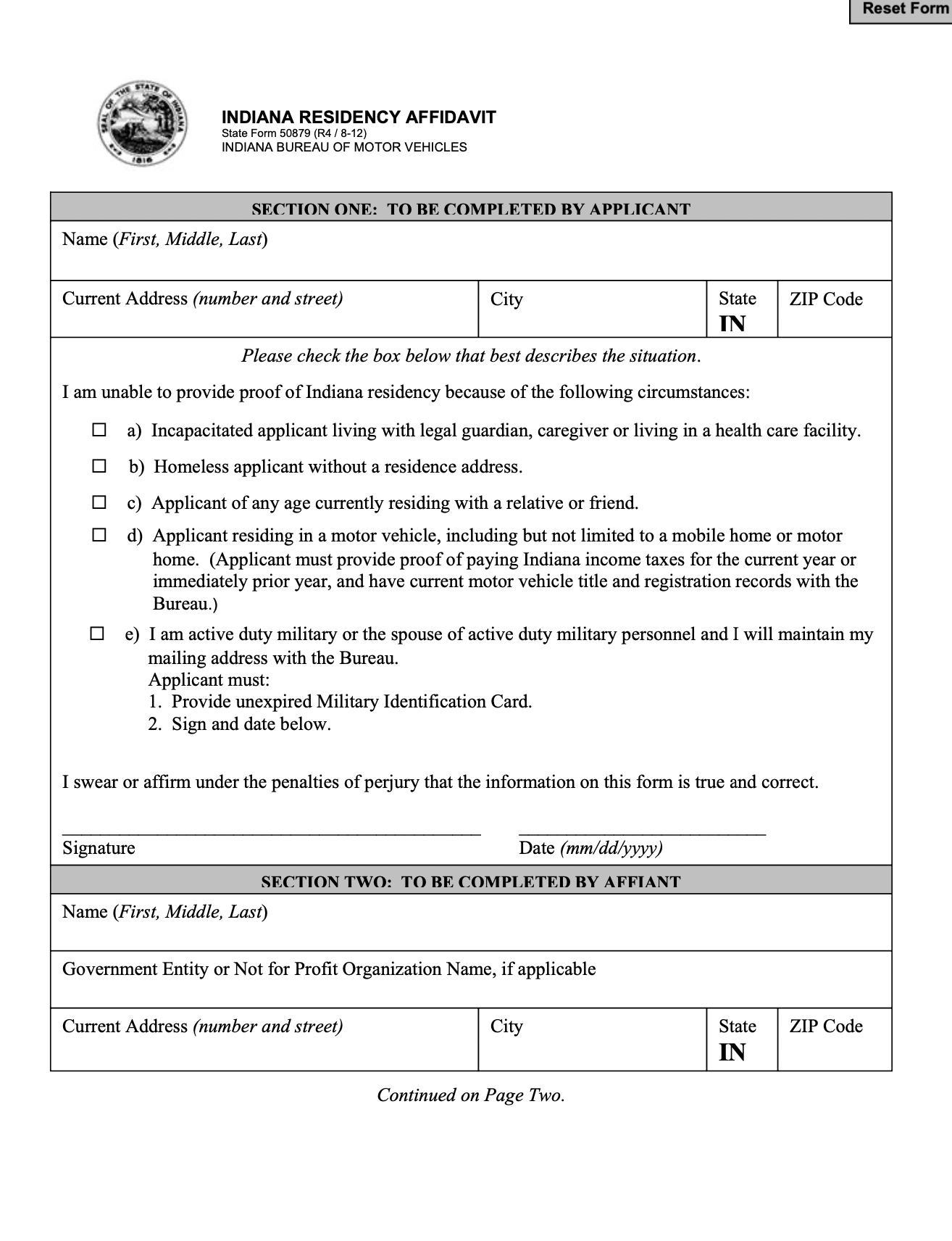If you are a younger resident of Indiana and don’t have two original documents that prove your residency, you may use the Indiana Residency Affidavit Form. The document must be signed by an adult (18 years of age or older). In addition to an unexpired Indiana driver’s license, the signer must present one other document proving his identity and residency in Indiana.
Proof of Residency Letter
If you want to complete an Indiana residency affidavit form, you will need to present some kind of proof of residency. These proofs can range from utility bills to homeowner’s insurance policies. You should be able to produce these documents within several months of applying for residency. Listed below are some of the more common proofs of residency. Depending on your particular situation, you may need to obtain a copy of the letter from your landlord, but if you are applying for a job, you will need to provide it within two to three months after your initial application.
Utility bills and bank statements are some of the most common documents that prove residency. However, it is not enough to have these two documents. You must also present two other documents that prove residency. You need to have a valid Indiana driver’s license or identification card and a bank account. If you are a minor, you should provide a copy of one of these documents to the school.
Indiana Residency Affidavit
An Indiana Residency Affidavit is a legal document used to prove your residency in Indiana. The document must be signed by an adult resident of the state or by an adult who is at least 18 years of age and who is a parent or guardian of a child. In addition to a driver’s license, an affidavit must also be signed by an original document proving identity and residency.
To obtain an Indiana driver’s license, you must be at least eighteen years old. Other requirements include a vision exam and a knowledge assessment. In addition, you must provide proof of residency by attaching your most recent rent book or council tax bill. Proof of residency may also include a letter or statement from your current housing association or council. A tenancy agreement may also be valid proof of residency.
Proof of residency letter for an incapacitated applicant
A proof of residency letter is required for certain types of immigration benefits, such as permanent resident status. Such a letter should state the applicant’s current address and provide contact information. The letter author should also attach the relevant residency documents. The most recent versions are preferred when filing for residency claims. Usually, two (2) documents are required to complete a residency claim. Once the residency letter and documents are complete, they must be submitted to a government agency or third party.
A proof of residency letter, or affidavit, is a legal document written by another person confirming that a person resides in a particular location. It is commonly used by government agencies, insurance programs, and employees and acts as official testimony. It is highly recommended that the letter be notarized to confirm its authenticity as a sworn statement. Here are some of the most common uses for a proof of residency letter:
Proof of residency letter for undocumented applicants
A proof of residency letter for an undocumented applicant may be difficult to obtain, but it can be obtained through the U.S. Department of Homeland Security (DHS). The DHS requires this letter to verify an applicant’s legal presence in the U.S. and it is an essential step in getting a driver’s license. Proof of residency may include a utility bill or phone bill, or a letter from a landlord or employer on company letterhead.
The principal applicant should be able to show that they lived in the state as an undocumented resident for three or four years before the scheme was opened. They must also have continued their undocumented residency on the date of application submission. In addition to the principal applicant, an eligible adult family member must provide proof of residency for two years before the application is submitted. The resident must live with the applicant in the same household as the person who is applying for the visa.
Download Latest Indiana Residency Affidavit Form 2022
